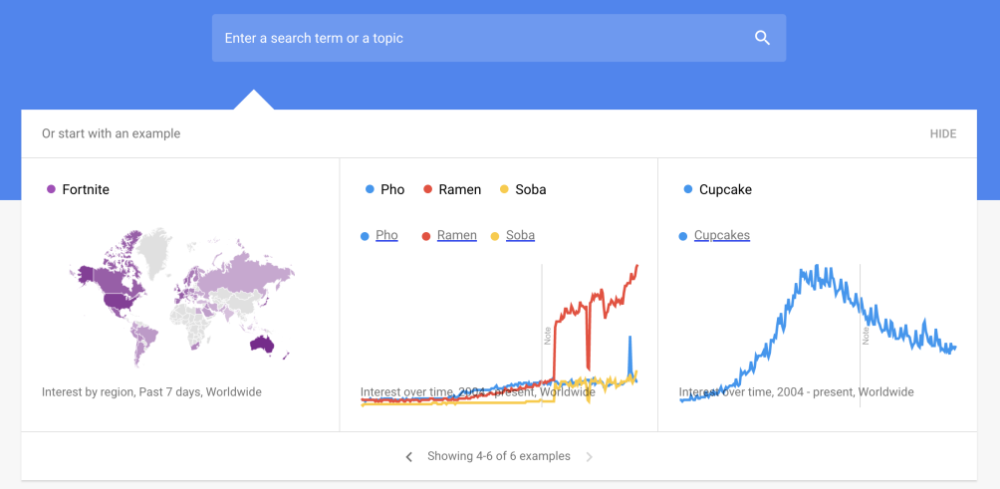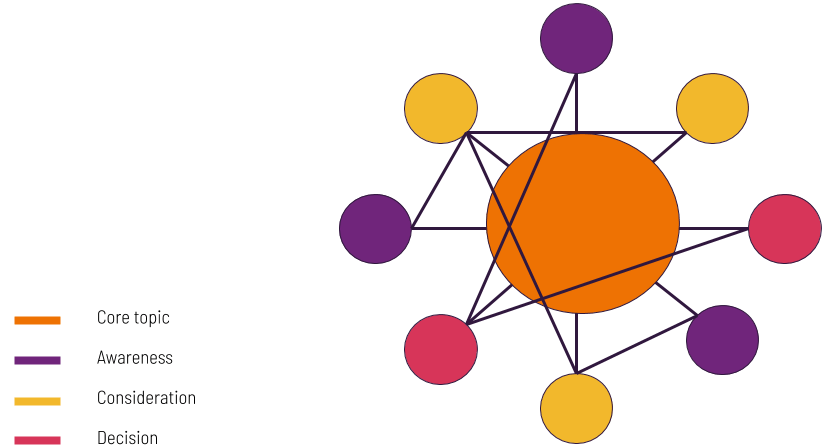Google Trends is a fantastic free tool from Google.
Trends lets you see what topics are trending on the web at any point in time, from 2004 until today.
It covers everything that Google search does, so whether you type in a brand name, a new social media platform, or the latest coffee brewing technique, you’ll see how many people are searching it now compared to other points in time.
Considering Google has over 90% of worldwide search engine traffic, their data set is a goldmine of insights that Trends lets you dig into.
Although it’s not strictly a keyword research tool like Ahrefs or SEMrush, Trends can be a great tool in your keyword research toolbox.
In this post, I’ll show you three ways you can use it to identify relevant keywords and generate new content ideas that will help your business get more qualified visitors from search.
Let’s jump in.
3 Ways to use Google Trends for Keyword Research
1. Identify Seasonal Trends

2. Find Related Topics To Start Creating Content On

- “Complete Guide to Inflatable Paddleboards”
- “Costco Paddleboard Review: Is It Worth Buying?”
3. Optimize Existing Content to Match Search Intent

Wrapping Up










